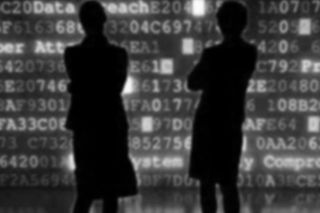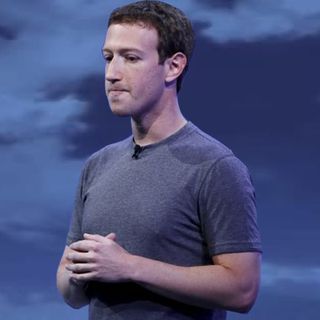
Women Are The Main Targets of Cybercrime. There’s a Solution for That.
More women in cybersecurity would make the Internet safer for all.

If you use the Internet — which you do — the chances that you’ve experienced some sort of cybercrime are pretty high. Two billion people had their personal details stolen in 2016 alone, and such hacks cost the global economy $450 billion. And if you’re on Facebook — well, as recent events show, even Mark Zuckerberg doesn’t really know how much of your information has been compromised.
If you’re a woman, the chances of being victim to cybercrime go up. Unfortunately, but unsurprisingly, women and girls are far more likely to experience sexual abuse over the Internet than men. But even identity theft targets women more than men: In 2014, more than 1 million more US women than men had their identities stolen. And security technologies, like face recognition, have more trouble identifying women and people of color.
Perhaps cybercrime unfairly targets women because, as a recent story in Nature finds, the field of cybersecurity has a major representation problem. According to a 2017 report, only 11% of global positions in cybersecurity are held by women. If the people responsible for fighting cybercrime continue to be predominantly male, it’s not unlikely women will continue to be disproportionately targeted. It’s natural to protect against the threats you know and experience — and men don’t experience the same threats as women.
It’s not that women haven’t contributed to cybersecurity over the course of its short history. Their contributions have merely been overlooked. As early as World War II, Nature reports, the US employed 10,000 women to decode messages sent by the Japanese and the Germans, and the UK employed 7,000 women at Bletchley Park, their center for cryptanalysis.
Women haven’t just been codebreakers — they’ve also been code creators. Actor and scientist Hedy Lamarr invented an encryption method in 1942 that was used to guide radio-controlled missiles underwater without being detected by the enemy. This same “secret communication system” would go on to form the basis of modern-day WiFi and Bluetooth technology. Her sizeable contribution didn’t become widely known until the late 1990s, near the end of her life.
In fact, women were the world’s first programmers. They calculated weapons trajectories by hand at the University of Pennsylvania in the 1940s and manually entering them into the university’s early “computer.” And in the 1950s, African-American female scientists at NASA were responsible for calculating the trajectories that put men on the moon. If this sounds familiar, it’s because this was the plot of the 2016 Hollywood movie, Hidden Figures.
Indian women have made no small contributions to cybersecurity. Dhanya Menon, a Thrissur-based computer science graduate, is India’s first cybercrime investigator. “I receive 200 complaints on an average per day from all over the country now,” she told The Hindu in 2016. Today, Facebook’s Director of Security is Indian computer scientist Aanchal Gupta. (We don’t know about you, but knowing this makes us feel — slightly — more sympathetic to their cause.)
Though we are finally getting around to recognizing women’s contributions to cybersecurity, the fact remains that women are grossly underrepresented in the field. Though the number of women in computer science grew steadily until the mid-1980s, it then suddenly dropped. Today, women in cybersecurity tend to be far more qualified than their male counterparts. More than 50% of women in cybersecurity say they’ve experienced some form of gender discrimination during their career.
In order to even out the gap, we need to give qualified women in the field their due, Nature writes. Additionally, cybersecurity needs to shed its sexist image. If, when you think of a hacker, you can only picture a hoodie-wearing recluse with no social skills, you’re not alone — and it affects hiring decisions. Women applying for jobs in cybersecurity fall short of stereotypes such as this one. Beyond this, there are smaller, subtler barriers to advancement for women in cybersecurity: much like other intelligence and military fields, it can be an old boy’s club.
Today, around 3.2 million people around the world work in cybersecurity. Another 2 million cybersecurity jobs will be needed around the world by 2020. As the amount of information we store online grows, so does the need for widespread cybersecurity measures. Since women are the primary targets of cybercrime, we need to make sure that the problem isn’t perpetuated, however unwittingly, by the people who are trying to fight it.
Urvija Banerji is the Features Editor at The Swaddle, and has previously written for Rolling Stone India and Atlas Obscura. When she's not writing, she can be found in her kitchen, painting, cooking, picking fights online, and consuming large amounts of coffee (often concurrently).
Related


Why Is Everyone So Upset With Facebook? A Primer.
